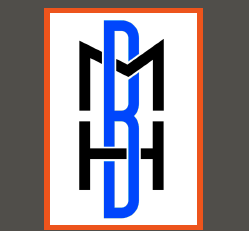
2nd Annual Parranda con Paranda: Puerto Rican and Garifuna Holiday Celebration
Dec 15, 2014 @ 12:00am
Featuring Lucy Blanco, Braata Productions, Libana Maraza, James Lovell, Bobby Sanabria, Jorge Vazquez.
In the Caribbean the holiday season is an occasion for many traditions, many of which have similar origins. So on this our second Parranda con Paranda: A Puerto Rican and Garifuna Holiday Celebration, we add a new twist. The Puerto Rican holiday procession will open the event and we’ll include the Garifuna wanáragua which is a version of what the Jamaicans call Jonkonnu (with variations on the name including John Canoe, Jankunu, Jonkanoo). Jonkonnu, like the parrandas of Puerto Rico, involved a procession, but in Jamaica, masked performers dance in the towns and villages.
Historical evidence shows that Jonkonnu originated in Jamaica in at least the 18th century and from there spread to other English-speaking colonial territories: to Belize; to the Baha- mas where it is called Junkanoo; to Bermuda where they celebrate it as Gom- bey; and in South Carolin where it was called John Kuner. During the slavery era it became associated with Christmas most likely as it was the one holiday the slaves were allowed to celebrate—released from work people took to the streets in celebrations that included mockeries of European dance forms and performances which were symbolic inversions of the power relations that constituted slavery. One theory as to the origins of the name, Jonkunnu, may be that it is named after John Conny, who was an African overseer of three European trading forts on the Ghana coast in the 1720s who gained notoriety among the enslaved Africans in Jamaica (see Oliver Greene’s documentary, Play Jankunú. Play: The Garifuna Wanáragua Ritual of Belize (2007).
The tradition incorporates African drumming and masked dances with the Euro-pean masquerade tradition as well as the English Christmas mumming traditions. In 1841 the mayor of Kingston banned the Jonkonnu parades, which were revitalized in 1951. Originally Jonkonnu maskers were all men. To the music of fife and drum, they danced wearing screen masks and headdresses, representing characters such as Pitchy-Patchy, Ki-Ku, the Devil, Masquerade Queen, among others.
In the Garifuna wanáragua the drummers follow the movements of the dancer who wear the screen masks and colorful headdresses of the type that can be seen in Jonkunnu celebrations. The dancers represent stock characters known as Two-Foot Cow and the Devil, perform the songs and antics to the Charikanari ritual. Sometimes women disguised as male dancers take part. The songs and costumes mimic foreign oppressors from the past as well as involving gender play and role reversal.
Though not associated with Jonkunnu, screen masks are also worn in Puerto Rico for a celebration in the town of Hatillo called the Festival de Mascaras for El Dia de los Inocentes on December 28th to remember the first Christian martyrs or Holy Innocents (Santos Inocentes)—this story is based on the Bible book of Matthew where it is recorded that many baby boys under the age of three years were murdered as commanded by King Herod in his quest to kill the baby Jesus. This festival began in 1823 with the arrival of immigrants from the Canary Islands. They dressed up in costumes of various figures including demons and would visit homes on horseback playing jokes on their neighbors. The masked performers represent King Herod’s soldiers and they run or ride through the towns from early in the morning looking for the children. Today the masqueraders engage in verbal dueling of a sort, but they ride on floats and painted tricks in comparsa- like groups, listen to music ranging from traditional genres to reg- gaetón, and spray shaving cream on each other.
